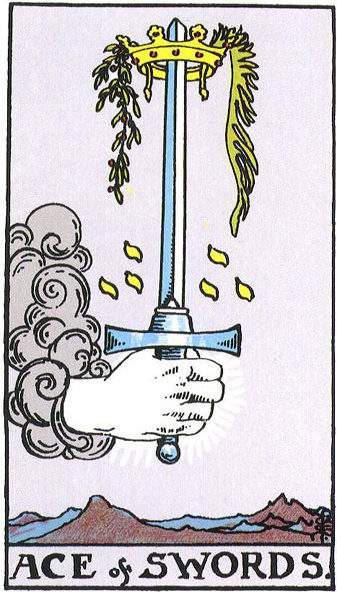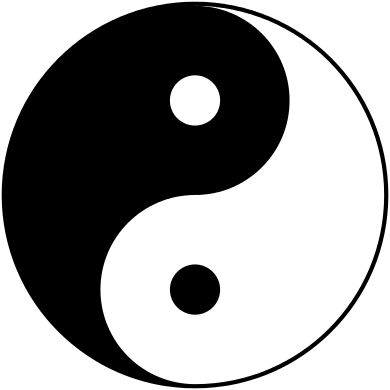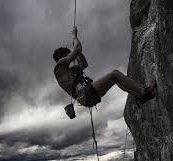1/1/24 No Self and negative effects of meditation.
A Monk said to Hui Hai, Ultimately then, there is just nothing at all. Hui Hai replied, We’ve come to the ultimate extent of yourself, but not to the ultimate.
When I first started visiting the popular reddit discussion site r/meditation, I was struck by descriptions of “depersonalization,” or “no-self” — of becoming a completely detached observer of yourself and your body, which makes life seem like an unreal illusion. I was surprised that some people can arrive at that state with very little preparation or even meditation practice. It sounded like what meditation was supposed be about. But instead of a positive realization and blissful liberation, depersonalization disorder is usually described in nightmarish terms.
I’d written something on the subject of emptiness and no-self years earlier, where I attempted to put into words, what was for me a very positive (and gradual) outcome from decades of devoted mediation practice and zen training. But apparently the same experience can cause profoundly negative results in some people, which can be very difficult to recover from. I was initially at a loss to understand how there could be such divergent responses to the same essential experience.
It shouldn’t be surprising that it can be distressing and destabilizing to realize that your own “self,” which has been taken for granted and constantly worried over, turns out to be simply a mental fabrication or projection, without any abiding reality. Suddenly, as they say in zen, the bottom drops out of the bucket and everything looks to be empty nothingness. Folks who came to meditation practice looking for peace and relief from anxiety might suddenly find just the opposite. https://www.vice.com/en/article/vbaedd/meditation-is-a-powerful-mental-tool-and-for-some-it-goes-terribly-wrong
Interestingly, many, if not most, such negative outcomes from meditation practice happen to individuals with years of experience and training (or to beginners who heedlessly plunge right into intense practice and long retreats). That’s because that kind of dramatic breakthrough doesn’t come easily for most of us.
Whenever I write about no-self, I’m careful to insert the word “separate,” as in “no-separate-self.” I think that’s an important distinction. There’s a big difference between the self dropping off into absolute nothingness, with nothing to stand on, and a small, separate self dissolving into something larger, like a wave returning to the ocean. It’s still nothingness, or emptiness, but it’s an emptiness that’s the source of everything, all phenomena, interconnected and interdependent.
I definitely still have a “separate self,” that I often get lost in, despite my practice, which is always evolving. Perhaps that’s the difference between a healthy loss of self and depersonalization — the small separate self continues and is actually informed and improved by contact with something larger. I have many moments where the distinction between subject and object dissolves in blissful oneness with my everyday environment and activity. I’m not totally there yet, but at least my faith is founded on some experience.
In the Heart Sutra, there’s isn’t just “form is emptiness,” which can be negative, there’s also “emptiness is form” — which doesn’t mean that emptiness is just another form, but that all forms arise from emptiness, in the present moment, interdependently.
My meditation practice has always focused on realization of the True Mind/Self, not on wiping out the small mind/self. The two are not mutually exclusive. The small mind becomes more sensitive and alive as it merges with one big mind, which can never be grasped conceptually. The mistake is trying to destroy and leave behind the small, separate self/mind. It’s no more unreal than big self/mind (which being “transcendent” is already illusory).
The great master Chào Chōu liked to say he was “just an ordinary person who understands things.”
2/18/23 Leaving home. For Buddhists “leaving home” usually means having your head shaved to become a monk and going to live in a monastery. It’s a way to dedicate yourself to practice with the support of other like-minded individuals under the guidance of an experienced teacher.
To me that didn’t fit the original idea, which I took literally to mean complete homelessness — not just to leave one home for another.
In 1968 circumstances certainly seemed to be pointing me in that direction. The country was in crisis, deeply divided and politically polarized. The assassinations of Martin Luther King and Robert Kennedy, riots, racism, cops beating anti-war protesters, everywhere I turned there was discord and chaos.
In San Franciso’s Haight Ashbury, where I’d made my home, methamphetamine had swept through the neighborhood, plunging it into darkness and despair just a few short months after the unreal exuberance of the “summer of love.” Instead of music and dancing in the streets on LSD and marijuana, there were gun battles on the intersection below my flat on Page street, as the Hells Angels and Blacks fought for control of the meth trade.
I’d dropped out of graduate school and didn’t have a job or any way of supporting a normal lifestyle. My on again off again relationship with my fiance had looked to be settling down and she was finally preparing to move in with me — when she suddenly died.
It felt like I had nothing to live for other than a burning need to find some kind of inner salvation or enlightenment. So I gave away what little I had, tied an old sleeping bag into a bed roll with several pounds of brown rice and a few cooking utensils inside, and hit the road. I was 25 years old.
In India, there’s an ancient tradition of renunciation and giving up worldly life to become a homeless wanderer, bereft of even the most basic social connections. That’s how the Buddha reportedly lived until his deep enlightenment experience sitting in meditation under the protection of a large fig tree — although some accounts say that he was accompanied by several relatives that his father sent along to look after him.
Homeless mendicants were not common in 1968 America, to say the least. In fact homelessness, which is so prevalent today, was very rare back then, with the few exceptions being “tramps” or “hobos,” usually alcoholics, who congregated around rail yards.
Even today in India there are renunciates, or “sanyasi,” who are still respected, despite a preponderance of imposters and other beggars who also live on alms. But I didn’t get a lot of respect hitchhiking around the Southwest as a ragged, solitary stranger, with long hair and a beard (uncommon in cowboy country back then). In fact, I got shot at standing on the roadside in Colorado waiting for a ride and epithets like “fucking hippy” were inevitably hurled my way (along with other objects). In Southern Mexico someone threw light bulbs at me.
But mostly everyone just ignored me. The feeling of always being outside of ordinary society, a total stranger, was overwhelming. I realized how much my reality had depended on a solid frame of reference like a home, with friends and family to project an identity onto me. Instead I found myself totally adrift, without boundaries or guideposts.
My sense of self didn’t simply disintegrate, it expanded and spread out over everything. Thoughts appeared to reverberate throughout the external world — only to come back at me in bizarre coincidences and mental associations. Rather than feeling invisible, I felt like everyone knew about me.
I came to understand what schizophrenics mean when they refer to psychiatrists as “shrinks.”
At least it was still relatively easy to hitch rides in those days and I kept moving from place to place, occasionally working at odd jobs and sometimes staying briefly with friends or strangers who took me in. I slept under freeways and bridges, in dry river beds beneath a star-strewn sky, and on park benches and picnic tables.
It was one long meditation, sometimes spent actually sitting cross-legged beside streams or in mountains, practicing zazen the way I’d been shown by Suzuki — focusing on my breath until my mind quieted down enough to “just sit.” But the unsettled lifestyle of a wanderer, though very effective at ripping away conditioning and habits of mind, was not conducive to settling down in meditation.
Life on the road turned out to be much more difficult than I’d imagined. I was young and in excellent health and there were people who cared about me that I could turn to for help when I had to, but homelessness was still too much for me to bear, both physically and mentally.
Now, many years later, my heart breaks when I see homeless people, even older women, sleeping in doorways or shuffling along with their few possessions.
9/10/2022 Mindfulness or Mindlessness? Mindfulness, or as some zennists refer to it — “Macmindfulness,” has gotten very popular of late, with all kinds of newbies teaching meditation, particularly psychologists and therapists.
Insofar as mindfulness practice encourages paying attention to the present moment, without ruminating on the past and future, it is well within the traditional approach to meditation. However there are a few issues with modern mindfulness which can cause serious mental cramps in those trying to practice it.
The most frequent cramp occurs when trying to practice the common injunction to “just observe the breath without controlling it.” Over and over in my occasional forays onto discussion sites, such as r/meditation on reddit, I run across meditators who are distressed at their inability to observe the breath without controlling it. That shouldn’t be surprising, since it’s physically impossible to do so.
As soon as one applies consciousness to the breath it comes under conscious control and if the breaths are long or short becomes a matter of volition. The conscious and unconscious breaths are two very separate systems (thankfully), so the lungs continue (normally) to operate quite well without consciously having to remember to breath.
In the most authoritative ancient source of Buddhist meditation instruction on the breath, the Anapanasati Sutta, concentration on the breath is combined with focus on such things as “mental fabrication” and “relinquishment.” Nowhere is there mention of watching the breath without controlling it. In traditional East Indian yoga the important practice of pranayama literally means control of the breath.
The best approach to meditation on the breath is probably not to think about it too much by trying to either control or not control it. Or instead go ahead and control it by practicing something like breath counting, abdominal breathing or other forms of breath work which serve as aids to concentration and relaxation. Returning to the breath grounds the mind in the moment and clears away discursive thinking — as long as one doesn’t introduce the distracting notion of control.
A more subtle cramp occurs with the instruction to “watch your thoughts,” the assumption being that you’re separate from your thoughts and can sit back somewhere and simply watch them without interfering with them. But, as I’ve pointed out elsewhere, it’s also impossible to “watch” your thoughts. If a thought comes up and you make note of it, you’re not actually seeing that thought as it occurs, but an instant afterwards. First there is the thought and then there is another thought in which the previous thought is seen, as if in a rearview mirror. Why? Because you ARE each thought. Either you’re looking at, or “noting,” a thought after it has happened (in memory) or you’re projecting it beforehand, by thinking of thinking of something. There isn’t a separate consciousness that can watch when a thought actually occurs. When you try to watch a thought it disappears or changes into another thought. Thus attempting to watch thoughts is a way to eliminate them, but it takes considerable effort and concentration. A better approach is to simply relax and let go of thoughts, and not follow them out. Traditionally, “mindfulness” meant paying attention to what you’re doing as you go about your daily life, right here, right now, rather than as a technique for sitting meditation.
Many meditators who imagine they are watching their thoughts, confidentially declare “you are not your thoughts” and go on to project another self, an observer or “witness,” separate from an experiential movie or life-stream. This mental fabrication can be mistaken for enlightenment even though it is another form of self-clinging, or as they say in zen, “putting another head on top of your head.”
Recently there’s been folks who have experienced severe insomnia as a result of meditation. One former meditator even complained that meditation “ruined my life” because of a new inability to sleep at night. This is apparently a result of being too mindful of arising phenomena, such as the precise moment of falling into sleep — phenomena which is better left to the unconscious part of the brain.
The exercise of mindfulness has come to mean an obsessive focus on whatever arises or comes into awareness — when what is required is to let it go and see through phenomena as empty and transient.
Classic zen texts often refer to “mindlessness,” or “no mind,” instead of mindfulness. This doesn’t mean sitting as though dead and falling into nihilistic nothingness and unconcern. Rather it indicates emptying the mind of discursive conceptual thought and returning to the ever-present source of all forms and phenomena, where mind and objects merge into one whole.
9/3/2022 Zen Letters. Good zen books are best read in reverse. First there is the experience and then it can be understood and confirmed by reading about it. Unless there has been a personal encounter with what the words are pointing at, such writings can appear nonsensical, full of contradictions and meaningless repetition. Zen Letters, Teachings of Yuanwu, translated by brothers J.C. Cleary and Thomas Cleary, is a classic example.
The great Chinese master Yuanwu (1063-1135) was also the author of an even more abstruse work, the famous collection of koans, the Blue Cliff Record. But his letters, written primarily to lay followers, are more accessible and especially helpful for those of us who live worldly lives but are nonetheless engaged in sincere practice of meditation.
Yuanwu’s view of “mindfulness” is somewhat different from what has become so popular lately. He wrote —
The ancients were always mindful of this matter….in the course of movement and action, they invariably turned around and focused back on their own true selves. The practice of all the adepts since time immemorial who completely penetrated through was none other than this. Thus, with their fundamental basis firm and strong, they were not blown around following the wind of objects.
Turn and look within to realize the true self, what Yuanwu referred to as as the fundamental ground, then the world can be serenely managed, even in the midst of activity and circumstances —
Although it is just this one thing that we all stand on, ultimately you yourself must mobilize and focus your energy. Only then will you really receive the use of it.
While Yuanwu’s letters might appear incomprehensible to many, for someone who has been practicing meditation or zazen, they are likely to be a source of inspiration and a guide to the path beyond words —
When you reach the point where not a single thought is born and before and after are cut off, you walk upon the scenery of the fundamental ground. All the wrong perceptions and wrong views of self and others and “is” and “is not” that make up the defiled mind of birth and death are no longer there. You are completely cleansed and purified and have complete certainty.
You are at peace, not fabricating anything, not clinging to anything, freely pervading everything by being empty, perfectly fused with everything, without boundaries.
The letters of Yuanwu are short and lend themselves to reading one letter every night before falling asleep or to randomly opening the book at any point.
7/27/2022 Stopping Thinking (or not). An old metaphor for trying to stop thoughts in meditation is that it’s like trying to get rid of weeds by placing a heavy rock on top of them. When the rock is removed the weeds grow right back. But just because they always come back, doesn’t mean it’s useless to stop thoughts. Even if it were possible, stopping thinking entirely, forever, would cripple normal functioning.
But stopping thinking temporarily — or at least slowing it down enough to see the forest for the trees, is essential to meditation practice.
Not thinking isn’t stopping all mental activity and becoming brain dead or getting into some kind of trance state that shuts everything out. It’s opening up and becoming more aware and awake to what is immediately present. The part of the mind that thinks conceptually and discursively is just a narrow, individual sliver of normal mentation — but it tends to be all-consuming, shutting out the rest of the world, which is vast by comparison.
Thinking serves to foster and protect a separate identity or self and the conditioning necessary for it’s continuity. While that’s essential for dealing with everyday life, it comes at considerable cost, cutting the individual off from deeper more satisfying levels of existence and understanding.
In the hexagram Keeping still, Mountain, the I Ching emphasizes keeping the back still —
The back is named because in the back are located all the nerve fibers that mediate movement. If the movement of these spinal nerves is brought to a standstill, the ego, with its restlessness, disappears as it were. When a man has thus become calm, he may turn to the outside world. He no longer sees in it the struggle and tumult of individual beings, and therefore he has the true peace of mind which is needed for understanding the great laws of the universe and for acting in harmony with them. Whoever acts from these deep levels makes no mistakes.
Simply settling the body and mind in the posture of meditation, and sitting still, will naturally eliminate the tendency to follow trains of thought. But it’s important to just let thoughts go rather than try to suppress them, which is like smothering a fire, it makes a lot of smoke and, as the I Ching says, The heart suffocates … Calmness must develop naturally and gradually, from inner composure. If one tries to induce calmness by artificial rigidity, meditation will lead to unwholesome results.
7/16/2022 Loneliness VS. Solitude. A brief survey of research into loneliness and solitude reveals that they are two divergent phenomena, which are often confused.
Loneliness, does not necessarily mean to actually be “alone.” The feeling of loneliness is amplified in crowds, when there’s no connection with other surrounding individuals. Social isolation is shown to be bad for our brains and health in general. The part of the brain that develops to deal with social situations and other people literally shrinks. Probably the loneliest place to be is in a crowded city without friends or acquaintances.
Solitude by contrast is to actually be alone, away from other people. Studies have shown that “people who learn to find comfort in solitude tend to be happier, experience lower levels of stress and are less likely to have depression.” Time alone, for many of us, is just as important as time spent with friends and family.
David Brooks, in a New York Times column today about lonely young men who become mass shooters, writes, “We see ourselves as others see us, and when no one sees us, our sense of self disintegrates.”
Other people project an identity and a reality onto us, which gives us a sense of belonging and security that most folks have difficulty living without. But that identity is also restrictive and limiting. Solitude can be liberating, opening up a larger more secure sense of self that includes the whole world. By contrast, the mass shooter, in a misguided attempt to create a larger than life self, is driven by loneliness to become famous for killing other people.
7/12/2022 Diversion and Distraction. My brother, bless his heart, gave us a Roku for our TV when he visited recently. I think he felt sorry for us, poor Luddites, deprived of the latest in technology to divert us from the existential boredom of human existence. We already had a TV, but it was only used for the occasional DVD movie from the local video rental store, one of the last of its kind. But our TV had never been hooked up to anything. Until now.
Before long I was spending almost every evening laying back in an old recliner staring at the TV, mostly watching youtube videos and mysteries on Brit Box. That’s still only a fraction of the time the average American spends glued to a screen.
Eventually I started to feel guilty. I was already spending too much time looking at the news on my computer and agonizing over the impending takeover of the country by fascist mobs.
Why guilty? Because I wasn’t being productive. I was wasting time.
I realized I’ve been infected by that uniquely American syndrome – the protestant work ethic. Americans, more than citizens of any other country, are defined by what they do for work. Research shows that we also suffer much more when we’re “out of work.” Usually the first question from a new acquaintance is, “What do you do?”
Then there’s Zen Buddhism, which is also infused with a strong work ethic. Zen monasteries in ancient China supported themselves for the most part with agriculture and simple manufacturing of things such as straw sandals. That’s how zen survived the persecution of Buddhists by Emperor Wu in the 9th century, which wiped out the other larger Buddhist sects who were dependent on the ruling class for support.
The 8th century Chinese zen master, Pai Chang, who established the Zen monastic rule, had a saying, “A day without work is a day without food.” He was insistent on working every day. When he was very old, he persisted in this, and his monks worried he would hasten his death, but they were unable to get him to stop. Finally, in desperation, they hid his tools from him. “I have no virtue,” he said, “Why should others work for me?” Then he refused to eat anything. Finally the monks relented and gave him his tools so he could continue working – and eating.
Once Yun Yen asked him, “Every day there’s hard work to do. Who do you do it for?” Pai Chang said, “There is someone who requires it.” Yun Yen said, “Why not have him do it himself?” Pai Chang replied, “He has no tools.”
At the end of his poem, Merging of Difference and Unity Shitou, wrote –
I respectfully urge you who study the mystery,
do not pass your days and nights in vain.
Or in another translation —
I humbly say to those who study the mystery,
Don’t waste time.
7/3/2022 Huang Po and the One Mind. The Zen Teaching of Huang Po, On the Transmission of Mind, Translated by John Blofeld and published in 1958, should be on any short list of essential books on zen. I first read it over forty years ago, when a friend, who wasn’t that interested in meditation, thought I might like it. I’ve probably read it more times than any other book.
Huang Po was a zen master in ninth century China, a pivotal era in the history of zen, or chan, from which most of the collected stories and koan originate. He was the teacher of Rinzai, founder of one of the two major schools of zen to come down to us.
When Rinzai experienced a great enlightenment he exclaimed, “After all, there’s not much to Huang Po’s zen.”
Indeed, his instruction is simple (if difficult) — just rid yourself of all conceptual thought and in a flash you’ll awaken to the One Mind. Every single thing, Buddhas and ordinary beings, are just the One Mind and the One Mind is like the Void, unfathomable and boundless.
Despite his insistence that all concepts be let go of, Huang Po introduced the overarching concept of “One Mind.” The One Mind, the source of all forms and phenomena, is at the same time empty like the Great Void — an echo of the form and emptiness of the Heart Sutra.
There is nothing that can be said or made evident. There is just the omnipresent voidness of the real self-existent nature of everything, and nothing more.
When concentration and clarity are sufficient, the bare concept of the One Mind can be used as an object of meditation to trigger enlightening experiences and insight.
In Bendowa, Dogen, the Founder of Soto Zen in Japan, states, “All dharmas are the One Mind, and the One Mind is all dharmas.” I think that by “dharmas” Dogen is not referring to teachings, but to what I’d call “mind streams.” Thus all mind-streams are one mind.
The Zen Teaching of Huang Po is full of technical Buddhists terms and images. It’s definitely not for beginners, although some who read it immediately think that they’ve understood zen enlightenment and that there’s no need to practice further. But Huang Po himself says —
Even if you understand this, you must make the most strenuous efforts. Throughout this life, you can never be sure of living long enough to take another breath.
6/29/2022 Unconscious Consciousness. The other day I opened an upper cupboard to get something. Apparently a glass lid on a sauce pan was leaning against the cupboard door. When I reached up and pulled it open, the heavy glass lid flew out like a Frisbee.
My hand shot out sideways and grabbed it in midair.
If I’d had to think about it first I couldn’t have possibly caught the lid before it hit something. That kind of thing happens to me a lot. I’ve had several close calls, especially while driving, where I managed to barely avoid serious accidents with quick, completely unconscious reactions.
I believe such abilities are heightened through meditation practice. When individual thoughts and the conscious mind, which separate us from everything else, are quieted and put aside in meditation and emptiness, then a larger, unconscious, more universal mind takes over and the entire world becomes a friend and helper. To quote the Bhagavadgita from the chapter on meditation —
One’s own self is the friend of that Self by whom the lower self is conquered; on the other hand, that very Self, of one who has not conquered their lower self, behaves inimically, like one’s own enemy.
Tapping into that larger unconscious Self makes it easier to get into a “flow state” or “zone,” where you’re completely immersed in each action you’re taking and everything else drops away in total concentration and ecstatic clarity. Whatever you’re doing comes together effortlessly, each element falling into place at just the right time, without having to think about it.
6/24/2022 Selected Lines from the Song of the Grass Hut
By Shitou Xiqian
Translated by Taigen Dan Leighton and Kazuaki Tanahashi
I’ve built a grass hut where there’s nothing of value.
After eating, I relax and enjoy a nap.
Though the hut is small, it includes the entire world.
In ten feet square, an old man illumines forms and their nature.
A shining window below the green pines—
jade palaces or vermilion towers can’t compare with it.
Living here he no longer works to get free.
Who would proudly arrange seats, trying to entice guests?
Turn the light around to shine within; then just return.
The vast inconceivable source can’t be faced or turned away from.
Let go of hundreds of years and relax completely.
Open your hands and walk, innocent.
Thousands of words, myriad interpretations,
are only to free you from obstructions.
If you want to know the undying person in the hut,
don’t separate from this skin bag here and now.
“Grass” construction is a form of thatch which can make structures that are quite substantial. “Ten feet square,” or 10ft by 10 ft is about double the size of my little teahouse/meditation hut, which is only 9ft by 6ft, the smallest standard sized teahouse. But my hut is only used for meditation, serving tea and the occasional nap, while Shitou apparently lived in his hut year-round. I have an 8ft by 18ft vintage travel trailer, painted dark green to blend with the woods, parked nearby for cooking and sleeping (which I bought from a neighbor for $125 about 20 years ago).
The Japanese teahouse is based on the romantic tradition of the hut in the wilderness where Chinese recluses retired from the world to meditate. Such huts were built from the simplest, readily available, local materials. I put together my rustic hut from local redwood board and batten, with shoji window screens cut from pellon interfacing (used in sewing) from a yardage store — more durable than rice paper from Japan. The walls are modular, built separately, so they can be unscrewed and taken apart for transport. It was originally sited hanging on a steep bank over the San Lorenzo River in the Santa Cruz Mountains and now rests in a secluded area among pine trees and Rhododendrons on the northern coast of California.
6/23/2022 Pranayama. In the sixties I started doing pranayama (yogic breathing exercises), along with hatha yoga and intensive meditation, and I’ve continued to incorporate various pranayama exercise into my daily meditation routine.
I do at least one round of alternate breathing (Nadi Suddhi), or nerve purification, with practically every period of sitting meditation (the method is shown near the end of meditation basics). I’ve found alternate breath control to be especially helpful at the beginning of meditation to calm overactive discursive thinking.
I was skeptical of the practice of just breathing from only one side to activate specific subtle nerve channels (nadi) said to exist on either side of the spine, in order to control “prana” or psycho/sexual energy — the right nostril side (pingala) being the extroverted (Active), solar nadi and the left nostril side (ida) the introverted, lunar nadi.
Then I came across a 2019 review of scientific evidence on the effects of yogic breath control (pranayama) that appears to confirm yogic teachings regarding alternate breathing, as well as numerous benefits of pranayama in general. According to that research, Nadi Suddhi breathing just through the left nostril stimulates the parasympathetic system and a general relaxation response, along with a reduction in blood pressure and heart rate, whereas right nostril breathing does the opposite, activating the sympathetic nervous system’s “flight or fight response,” along with an increase in both blood pressure and heart rate.
6/22/2022 Meditation and Self. According to some recent research into Mind-body practices and the self, “yoga and meditation do not quiet the ego, but instead boost self-enhancement.” That statement implies that meditation and yoga enhance the ego. But I think it’s misleading. Both Mahayana (including zen) and Vedantic systems of meditation, posit two layers of self — a small, individual self and a big, universal Self. Or as Suzuki Roshi taught, “small mind and big mind.”
Most individuals who are considered egotistical are actually insecure, with fragile egos in need of reinforcement. By contrast those who appear selfless have strong, secure egos. Why? Because their small self/mind has been subsumed to some degree by big mind. Thus meditation and yoga appear to strengthen the individual ego when it is actually “lost” in a larger, more universal self.
As indicated in my earlier blogpost Sameness and Difference below, according to the Lankavatara Sutra the small self/mind and the big Self/mind are neither separate or not separate (the same or different). However, the big Self/mind essentially supersedes the small self/mind in the long run, like waves returning to the ocean.
6/21/2022 Enlightened Mind. The mind of enlightenment is always present in everyone, equally, without exception. But it usually goes unrecognized, even though it is sometimes spontaneously experienced. Without understanding or training it isn’t cultivated. Thus it’s neglected and covered by worldly concerns and myriad conditions. It’s been compared to a priceless jewel lost in a dung heap. When there’s a real glimpse, it isn’t soon forgotten. Like losing a valuable gem in a crowded marketplace, a frantic search begins.
Taking up meditation practice, day by day over decades, it becomes more familiar. In the refuge of inner silence and emptiness it shines forth. Everything is resolved in an instant. All is forgiven.
The mind of enlightenment is the only stable source of happiness. Every other happiness is impermanent and fleeting, sometimes even changing to its opposite.
6/20/22 Pursuit of Happiness. About 20 years ago I wrote a somewhat rambling piece for a local magazine titled “This Present Moment.” A typically zen line I came up with, which the editor liked so much he featured it in an enlarged excerpt, was — “If happiness is getting what you want, then the way to be happy, instantly, is to want what you get.” I thought I was pretty clever, until I happened to listen to a tape of a talk by Ajhan Amaro, a Theravada Buddhist Monk living at a monastery nearby, in which he repeated the exact same line word for word. Although he didn’t attribute the saying, I assumed he’d read my article, and I was flattered that he would repeat something I’d written. Then I saw the date on the tape — it was apparently made shortly before the magazine came out. So I don’t know if that saying is original or not, or where it came from. But it doesn’t really matter, it’s true regardless — wanting what you get is crucial to happiness.
It can also be difficult sometimes.
This morning my cat, with a little help from my not paying attention, managed to break an irreplaceable plate I was very fond of. I have to admit it was a bit of a struggle not to let it spoil my mood.
But I persevered. And after a few minutes I let it go. Everything is impermanent I told myself. It was just another reminder that my 80-year-old body wasn’t going to last much longer either, something I don’t contemplate much, but maybe I ought to.
Then one of my renters called to say the new water heater I’d just installed a few days prior, in a cramped space under his counter, had stopped producing hot water. Oddly enough that wasn’t as difficult to swallow as the cracked plate, since it presented a challenge, and I pride myself on keeping the place up and providing a nice living space for someone. I also knew there was a good chance I could find the problem and fix it, which I did shortly after driving over there.
That afternoon my old walk-behind mower broke down mowing the large over-grown back yard and I had to spend precious time working on it in the hot sun. It was then that the multiple meditation periods I’d done the day before really kicked in. I was overcome with happiness just to be there, lying on the grass, sweating and awkwardly reaching under the mower, even with my sore shoulder. I was happy. Even blissful.
Afterwards, when I turned on the drip system I’d laid to a bunch of Rhododendrons, I discovered the mower had mangled one of the drip lines and I had to squeeze new pieces back together with my old stiff hands. But I was still really happy. Why? It wasn’t any sort of mental gymnastics. Nothing special. It was just myself, being myself. Completely. In the present moment. Nothing else required.
6/19/2022 Innocence. It’s Sunday evening and I just returned from my weekly meditation retreat in my little teahouse/meditation hut in the woods near here. Such a beautiful day on the North Coast of California! It was all I could do not to work in the garden instead of sitting zazen all day. As often happens I got sleepy around 3:00 o’clock so I lay down on the tatami for one period and took a brief nap. I awoke and went back to meditating with renewed focus. Before my nap the 25 minute periods of zazen seemed to drag on forever, and I kept glancing at the timer, but after the nap my mind was suddenly clear and open and the time flew by. Amazing.
As is my habit I’d made a bowl of macha (powdered green tea) when I first arrived in the morning. Then I threw the I Ching. I got Hexagram 25, Innocence. It’s not one of my favorites because the judgement says, If someone is not as he should be, he has misfortune. I’m rarely “as I should be” (innocent). However, there was a change in the second line which read, If one does not count on the harvest while plowing, nor on the use of the ground while clearing it, it furthers one to undertake something. This reminded me that past and future have no real existence and that I shouldn’t think I need to work really hard at meditation from now until I breakthrough to complete enlightenment in some distant future, because the enlightened mind is always ever-present (even if I’m only occasionally aware of it). All it requires is to be innocent of such thoughts and completely present right here in this instant.
Afterwards in my little trailer nearby, when I made my traditional beans and rice dinner, with vegetables from the garden, my mindfulness continued, along with a blissful sense of well-being.
6/18/20202222 Hatha Yoga and the Full Lotus. I first encountered the word “Yoga” when I read Swami Vivekananda’s Raja Yoga as a teenager in the 1950’s. It was only later that I discovered there are numerous different types of yoga, including hatha yoga, which is what most people today identify with the term yoga — probably because yoga teachers in the West tend to concentrate almost exclusively on the physical postures (asana) of hatha yoga.
In the late sixties, at the age of twenty-six, I retreated to an isolated shack beside a pond in the foothills of the Sierras to devote myself to meditation. In order to get my body to sit comfortably in the full lotus I took up the practice of hatha yoga. Unlike today, with yoga studios almost everywhere, hatha yoga classes were very rare in those days. So I read the few books on the subject that were available and started experimenting with the physical postures on my own. The asana that I found to be the most helpful for getting into a full lotus is the head to knee forward bend or “Janu Sirsasana.”
To do the head to knee pose, sit upright, flat on the floor, with both legs straight out in front of you. Pull one foot back towards your groin, with the bent leg on the floor and the sole of the foot against the inside of the opposite thigh.
Keeping the back straight reach forward over the extended leg with both hands. Be sure to maintain the natural curve of the low back. With the inbreath stretch out towards the front foot to eventually grasp the big toe. On the outbreath relax the torso downwards, the head going towards the knee, with the aim of touching the forehead to the straight knee and the elbows to the floor on either side. Continue stretching and relaxing for several deep in and out breaths before switching sides.
To make the knees more flexible for the half or full lotus, raise the the bent leg and place the foot over the opposite thigh, as in the half lotus, keeping the knee on the floor. Then bend forward again as before, stretching and relaxing with in and out breaths, alternating which leg is on the opposite thigh and which is straight out in front. If the pose is repeated two or three times on both sides, you should find that with each repetition you’re able to bend forward and downwards more easily and the bent leg will become more flexible.
Actually sitting in the half or full lotus, gradually extending the time, is still the best way to get the body used to sitting that way, but the head to knee pose is wonderful for loosening up the hips and knees in preparation.
When sitting in the half lotus with either leg on top is comfortable, you can progress to the full lotus. Place a foot on the opposite thigh and then very carefully bend the other leg in and lift the foot over and onto the opposite thigh in the full lotus. If possible, alternate which leg is on top, gradually extending the time. Gently reverse the process when coming out of the full lotus.
A variation of the head to knee forward bend is the Maha Mudra, which is used, along with special breathing exercises, to stimulate kundalini and control sexual energy. After you bring one foot back towards the groin you put both hands on the floor and lift yourself up slightly, then slide forward over the the foot until the heal rests under one side of the perineum.
Note — There is a “Mahamudra” tradition in Tibetan Buddhism that is probably not connected to the above Maha Mudra.
6/17/2022 Sameness and Difference. In the Lankavatara Sutra, right near the beginning, the Buddha states — Thus, Mahamati, if the intrinsic aspect of our repository consciousness and the unfolding aspect of consciousness were separate, the repository consciousness could not be its cause. But if they were not separate, the cessation of the unfolding aspect of consciousness would also mean the cessation of repository consciousness And yet its intrinsic aspect does not cease. Thus, Mahamati, what ceases is not the intrinsic aspect of consciousness, only its karmic aspect. For if the intrinsic aspect of consciousness ceased, Mahamati, that would be no different from the nihilistic views proposed by followers of other paths.
In the popular metaphor of water and waves — they are neither separate, nor not separate. If they were separate, water could not contain waves. But it does. Hence they are not separate. And yet if they were really not separate, when the waves ceased, the water would also cease. But the water remains, even when the waves cease.
When it is free of the unfolding and karmic aspects of consciousness, the “repository consciousness” is known as the tathagata-garba (womb of the Buddha) or simply the Buddha Mind.
In the next paragraph of the Lankvatara, the Buddha states, Mahamati, the followers of other paths claim that when the grasping of an external world ceases, the continuity of consciousness also ceases. But if the continuity of consciousness ceased, that continuity which has no beginning would also cease.
This sounds a lot like eternalism, unless it’s remembered that when the “unfolding aspect of consciousness” ceases, so do all distinctions, such as unfolding and ceasing.
6/16/2022 Late Night Meditations and Blood Pressure. After a lifetime of sleeping like a baby (or a teenager), when I turned sixty I started waking up in the middle of the night after about four hours and I’d have trouble getting back to sleep again. Now, instead of fighting it, I get out of bed, don an ample terrycloth robe with a monk’s hood, and sit down (by the heater in winter) and meditate for two hours (four 25 minute periods of sitting with 5 minutes of walking meditation in between) before going back to sleep for another three or four hours.
I’ve come to savor those meditations in the peace and quiet of the dead of night. Combined with a session before bedtime and again in the morning I can easily reach my goal of three hours of zazen a day. Apparently that’s what it takes for me to continue experiencing those delicious moments of spontaneous insight. While the insights are not as exuberant as they once were, they are deeper and more lasting — although I have yet to reach stability and continuity, if that’s even possible.
Lately, I’ve been occasionally checking my blood pressure with a handy electronic tester. When I take it just before my late night meditation it’s normal or even slightly elevated, but right afterwards it’s twenty points or more lower for the top number and 10 points lower for the other number. I don’t know if that’s a good thing. It’s almost too low, although I don’t have any symptoms of low blood pressure, like dizziness or feeling faint. My daytime meditation sessions also produce a drop in blood pressure, but not as dramatic — only a few points lower after meditating. It does show that its having an effect on my organism, a least temporarily.
Meditation is often touted as some sort of cure-all, but I think it’s been oversold. Most folks who start meditating give it up before very long. I’ve stuck with it for almost 60 years out of an insane need to understand this life, where we come from and where we go. It turns out that the answers are intuitive and subjective, and unless one is a teacher or writing books, and making a career of it, it’s hard to justify all the time and effort. I don’t blame those who quit after a while. It’s a long hard path, with little pay-off in the currency of this world. Still, I don’t regret a moment of it.
6/15/2022 The Lankavatara Sutra. My first copy of the Lankvatara was the “epitomized version” by Dwight Goddard which I read and reread in the early sixties while living in the Haight Ashbury. It’s based on D.T. Suzuki’s version, translated from a 1923 sanskrit recension, or composite. Why Suzuki would choose what is obviously an inferior version to translate into English, when there were good Chinese translations available, is a mystery to me. He did something similar with his translation of an inferior version of the Awakening of Faith, another seminal Mahayana Buddhist text. I think that unlike some translators, such as Thomas Cleary, who are only good at translating, D.T. Suzuki was at his best when writing original material rather than translating texts into English. Cleary also has a translation of the Lankavatara (only available on Kindle) which I have yet to read, but that sounds very similar to Suzuki’s.
Goodard’s version of the Lankavatara, despite being “epitomized,” is still plenty complex and abstruse, but simpler and more accessible than D.T. Suzuki’s translation, upon which it was based (with Suzuki’s blessing). It hammers home the basic message of the Lankavatara — that everything is an illusion, or “mind only,” and that the truth can only be experienced through personal realization and cannot be expressed in words.
Lately I’ve been “studying” (one doesn’t easily just read the Lankvatara) the comparatively recent translation by Red Pine. I put off buying it for some time because I was skeptical that a bearded American from Port Townsend Washington was up to such a daunting task. But I’ve been pleasantly surprised, to say the least. Red Pine’s translation from the most popular Chinese version, which was probably the same one that Bodhidharma recommended as the only text his disciple would need, is surprisingly different than what D.T. Suzuki came up with — one obvious difference being the translation of a central concept in the Sutra that is said to be the basis of an illusory perception of reality, that Suzuki apparently translated as “discrimination” and Red Pine translates instead as “projection.” I think that both words are meant to describe how our conceptual mind creates a manageable reality from the constantly changing, chaotic input of the senses. The Sutra emphasizes that it’s those mental discriminations and projections that prevent us from seeing our true nature.









 She silently consulted the I Ching for a few moments before announcing the results, “The Caldron, with no changes.” Then she handed me the book, open to Hexagram 50, Ting/The Caldron. The Ting, a bronze food vessel used in ancient Chinese ceremonial meals, is said to represent the spiritual nourishment dispensed by sages and teachers — which is what the I Ching itself would come to mean to me.
She silently consulted the I Ching for a few moments before announcing the results, “The Caldron, with no changes.” Then she handed me the book, open to Hexagram 50, Ting/The Caldron. The Ting, a bronze food vessel used in ancient Chinese ceremonial meals, is said to represent the spiritual nourishment dispensed by sages and teachers — which is what the I Ching itself would come to mean to me.



